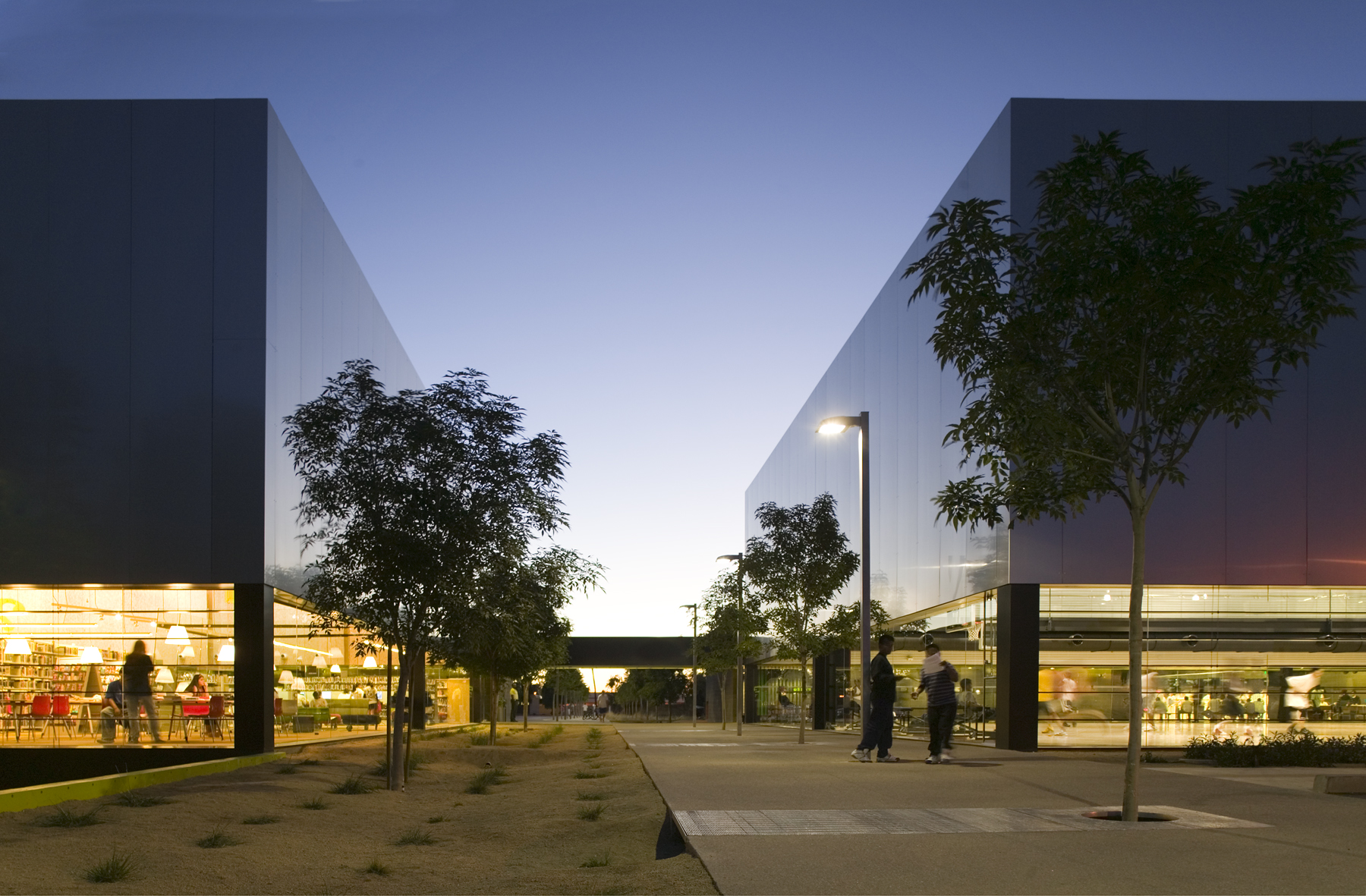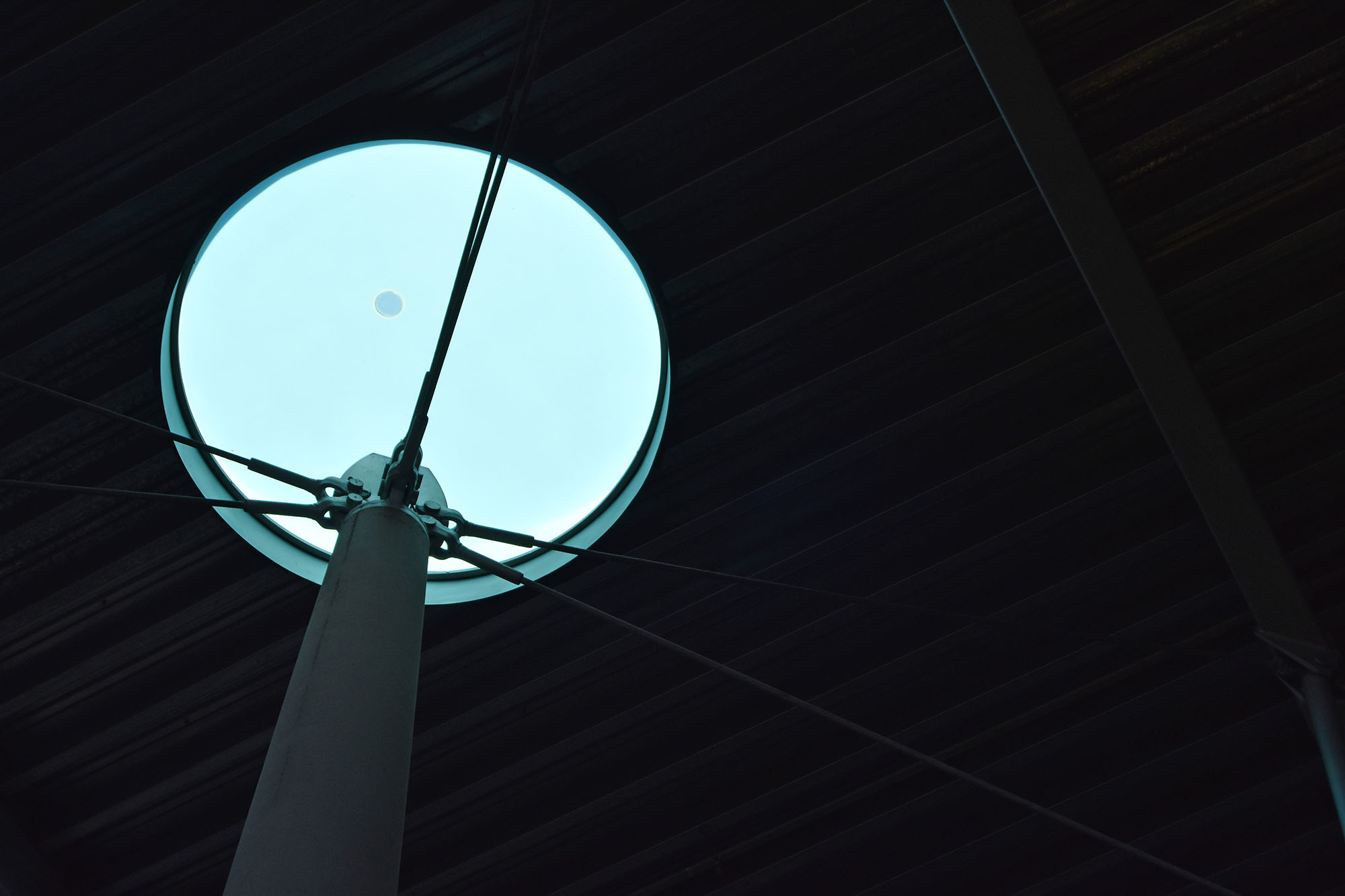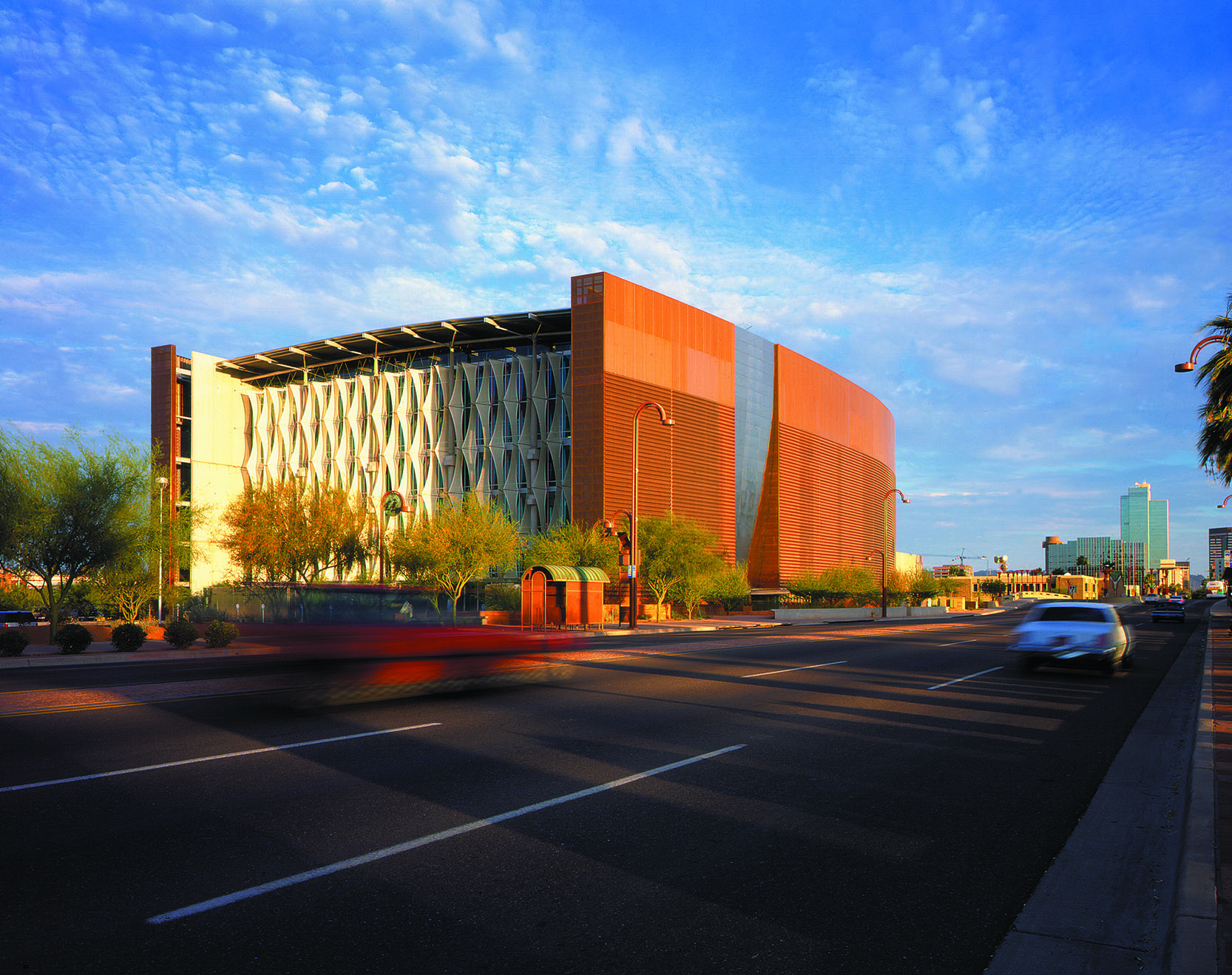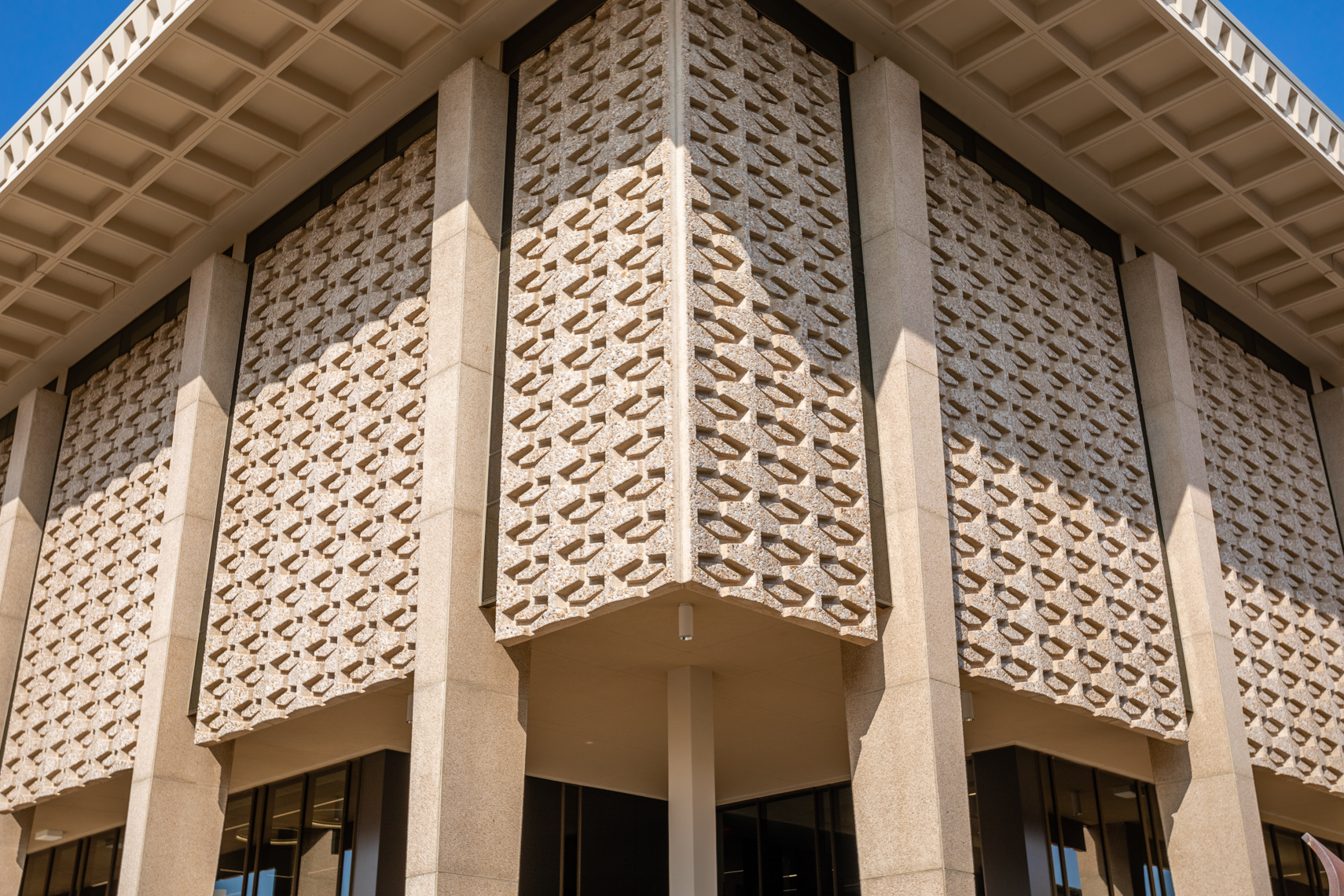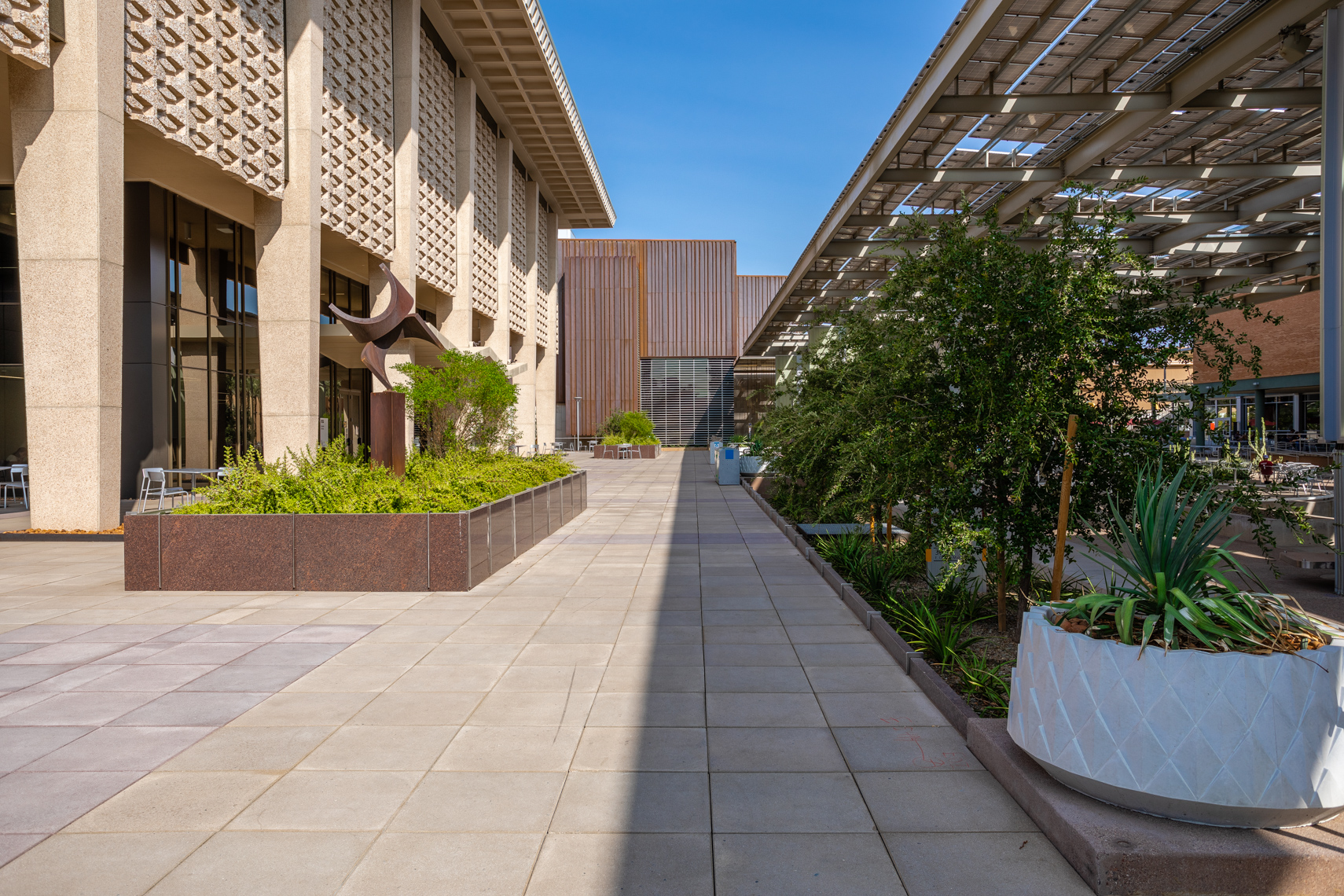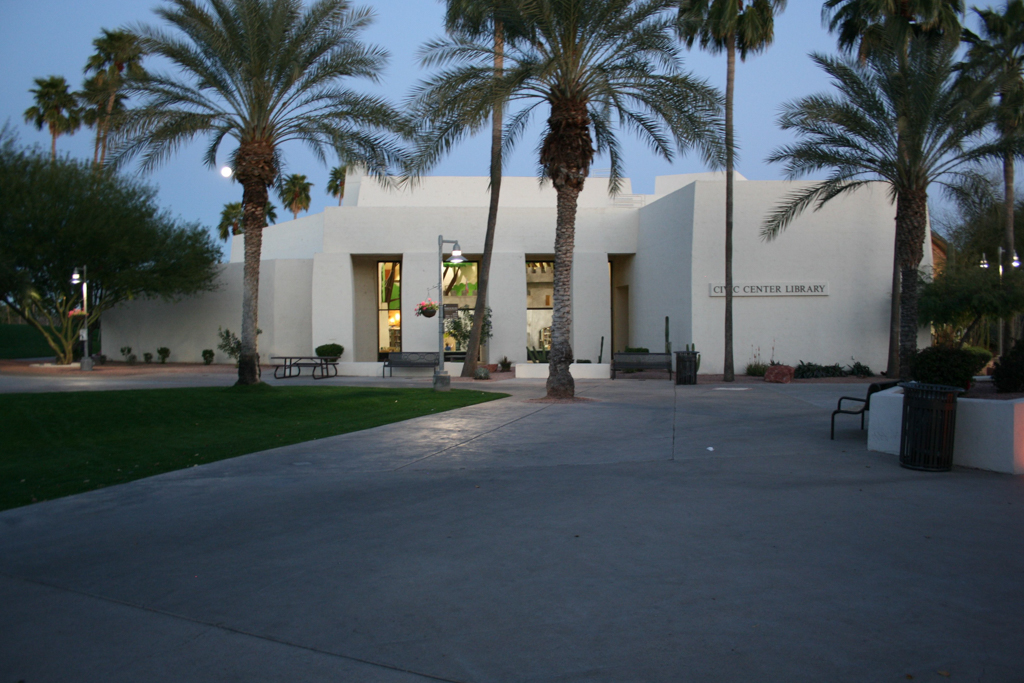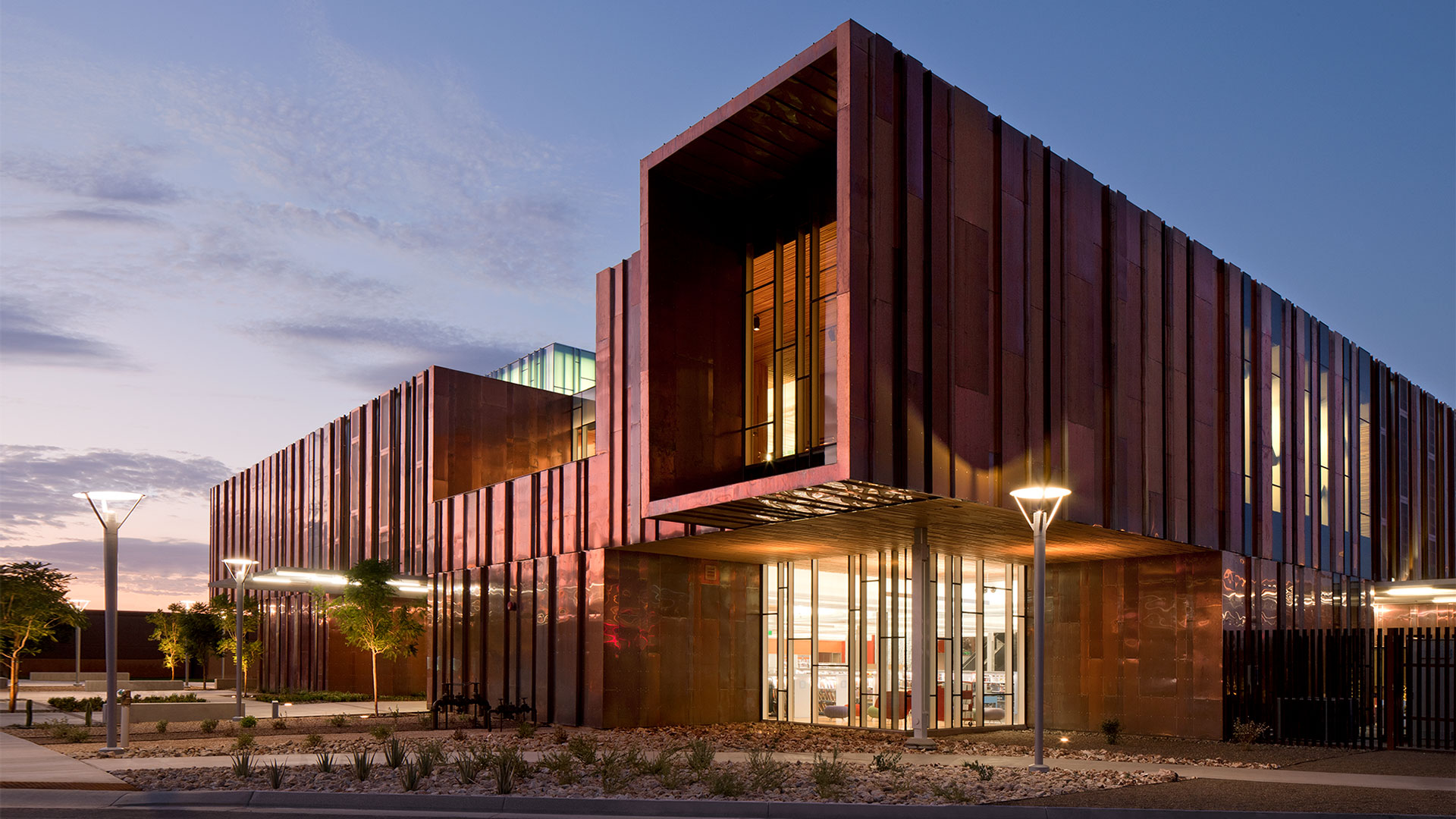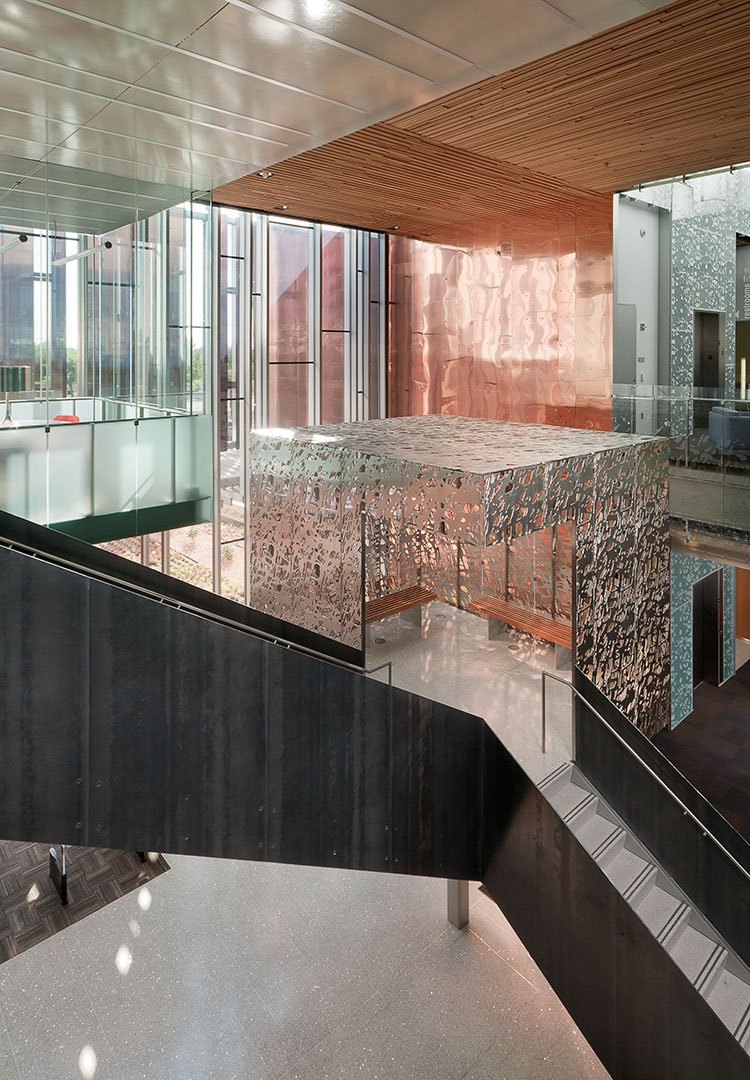Be part of the conversation: azarchitecture/Jarson & Jarson Architecture blog covers architecture and civic topics that comment on what’s happening in the Valley’s diverse design community. Here’s what’s happening now:

Nourishment for the Soul: Architectural Libraries
The goal of a library as a simple repository for information shifted in recent years into one a place of gathering in the community. The world of modern architecture responded in kind as the aesthetic shifted from an unvarnished sanctuary for knowledge into one of communion where the sense of environment and place factor importantly into the design, whether by natural intent or the project demands. Despite the pandemic pausing the tenants of the gathering part of that mission, libraries still serve the local communities as spots for other vital public interest in the meantime.
Palo Verde Center — Wendell Burnette Architects & Gould Evans Associates
Built: 2006 | 4402 N 51st Ave, Phoenix, 85031
In Summary: The architects entered the project with a mandate by the city to renew the area, yet retain the popular community aspects and green space. The library and park exist side-by-side allowing for a metaphysical dialogue between the mind and body, exemplified by a “reverse lantern effect” of the trees moving through the mill-finished steel — and thus the mass of the building. The architects positioned the design of the new library toward the edge of the street to also contribute to that effect.
From Arch Daily: The Palo Verde Library and Maryvale Community Center has received numerous awards including a 2009 Honor Award, AIA/ALA National, 2007 National Honor Award, and a 2006 Merit Award, AIA Western Mountain Region.”
From the Architect: “Some of the inspiration for the building was an old Circle K which projects what it is selling to the street. When you drive down 51st Avenue you see into the library, you see books, people reading, into the community center, people playing basketball, a karate class and then the pool. You understand the civic program of the building in the community.” —Wendell Burnette
Burton Barr Central Library — Will Bruder Architects
Built: 1995 | 1221 N Central Avenue, Phoenix, 85004
In Summary: Described by Nader Tehrani as a literal monolith on the downtown skyline, which evades “any architectural reference to scale, aperture, or signs of inhabitation,” this idiosyncratic library defied budget restraints to produce a distillation of what a community sought to house its knowledge. The 1,000,000 volume collection’s ground floor opens to a “crystal canyon” atrium to expose its contents through structural glass sheathing on every floor. Its design culminates on a fifth floor reading room which notes its location and the passing of seasons in the architecture on the Summer Solstice. Considered the greenest building before widespread application of the LEED certification.
From the Architect: “We have this great public room at the top of our library, which houses the non-fiction collections and all these studied positions with fantastic views north and south, I knew the roof had to float above this space like a cloud. As we challenged our engineers at Ove Arup to come up with an idea [for the fifth floor], they came with this cable cat’s cradle across the roof. We can literally flout at the tip of the column from the steel detail which looks like a candle illuminated. Which gives this special mythical quality to this room and space.” —Will Bruder, at the 2018 Summer Solstice Event
Hayden Library — Weaver & Drover, Redesign by Ayers Saint Gross + TRUEFORM
Year: 1966 | 300 Orange Mall, Tempe, 85281
In Summary: Slowly over fifty years, Hayden Library on the ASU Tempe Campus became a mausoleum, of sorts, when the library entrance was sealed in 1988, as the then-new subterranean entrance to the library was opened south of the Hayden Lawn. A literal reinvention was undertaken by the local architecture team of Ayers Saint Gross and TRUEFORM Landscape Architects to reinvent the library services provided and promote an openness which past updates obscured.
From the Architect: “It’s the heart of campus. It really encourages a porosity to its edges. When we see these old buildings like this, we’re always looking for chances to repurpose, reuse and recycle, all those “re”-words. Ayers Saint Gross [the project architect] pulled all the granite slabs off the plaza deck level and created this raised platform plaza with the stairs and ramp to access it all the way around the entire library, with that material used as the retaining wall system. It didn’t disappear, we kept that history in close context. It tells that story right there.” —Todd Briggs, of TRUEFORM
Scottsdale Library – Bennie Gonzales
Year: 1968 | 3839 N Drinkwater Blvd, Scottsdale, 85251
In Summary: An appendage to the masterplan of Civic Center, the Scottsdale Public Library was created in an International Style and his own regional stylings with an aim for openness. The famed architect Bennie Gonzales built the space to replace the original library, one of the oldest buildings in Scottsdale which still exists on site. Constructed as a 37,000 sf facility, ten times the size of the original, it was designed to be truly open with massive pillars and obtuse angles to give the literal and figurative space to hold its weight of contents.
From the Architect: Referring to City Hall, “I don’t think there’s anything more painful experience of separation than when you walk down the halls of a government building and see rows of rooms,” -Bennie Gonzales, (Oct. 22, 1967) to the Arizona Republic.
South Mountain Community Library — Richärd+Bauer
Year: 2011 | 7050 S 24th St, Phoenix, 85042
In Summary: Modeled after a circuit board, the project presents that same ethos of connection to that vital piece of electronics — even down to the Copper PCB-like material, which adorns the outside, which Bauer likened to a barcode. Reference and academia are balanced even on this project: The library occupies the first floor space, with all the usual elements, while the academic meeting spaces and centers were laid on entirely on second floor. However, like their inspiration they are interconnected in their functionality.
From the Architect: “Libraries are inherently tied to the transformation of informational systems that are changing at an exponential pace. The challenge is not to capture a moment in time, but develop an open-ended flexibility,” -Richard Bauer, to world-architects

